
Credit: Artwork by Randy Russell. From an excellent page on the Multispectrum of energies.
The visible light spectrum ranges from short-wavelength violet to long-wavelength red. Photons of light from violet end of the spectrum have the highest energies and the highest frequencies, while red photons have lower energies and lower frequencies. Beyond the range of our vision are the longer wavelengths of the infrared and the shorter wavelengths of the ultraviolet regions of the electromagnetic spectrum.
See below for extensive links to scientific papers on light for healing, weight loss, rejuvenation, facials, etc.
LIGHT THERAPY OVERVIEW
Visible red light, at wavelengths from 630 to 700 nm penetrates tissue to a depth of about 10 mm. Light at this wavelength is very beneficial in treating problems close to the surface such as wounds, cuts, scars, trigger and acupuncture points, and is particularly effective in treating infections. Infrared light (800 to 1000nm) penetrates to a depth of about 40mm and deeper which makes it more effective for treating organs and provide relief for ailments of bones, joints, deep muscle tissue.
The diverse tissue and cell types in the body all have their own unique light absorption characteristics; that is, they will only absorb light at specific wavelengths and not at others. For example, skin layers, because of their high blood and water content, absorb red light very readily, while calcium and phosphorus absorb light of a different wavelength. Although both red and infrared wavelengths penetrate to different depths and affect tissues differently, the therapeutic effects are similar.
Superluminous LEDs (Light Emitting Diodes) are safe concentrated light sources used to produce the specific wavelengths of light that provide therapeutic benefits of light therapy without adverse side effects.
THERAPEUTIC EFFECTS
- Increases blood capillary circulation and vascular activity by promoting improvement in the metabolism of nitric oxide (NO). This facilitates improved regulation of vasodilation and leads to the formation of new capillaries – this in turn provides additional oxygen and nutrients to accelerate natural tissue healing processes and eventually evokes a cascade of beneficial biochemical processes.
- Stimulates synthesis of adenosine tri-phosphate (ATP)—an immediate energy source for muscle contraction and essential in the metabolism of all cellular processes and sustaining living systems
- Relaxes muscles, reduces nerve excitability and stimulates nerve transmission
- Reduces scar tissue and stimulates wound healing
- Increases lymphatic system activity and relieves edema and discomfort associated with swelling
- Stimulates acupuncture points and immune response
- Stimulates production of collagen—the most important component of wound healing
- Increases phagocytosis – the body’s natural process to scavenge dead and degenerated cells and is important to the infection control process required for healing
- Increases RNA/DNA synthesis – this stimulates cellular reproduction and facilitates accelerated replacement of damaged cells
- Increases production of endorphins and enkephelins from the brain – promoting pain reduction and mood
- Stimulates production of adrenals— which facilitate long term pain relief and resilience to stress
- Reduces inflammation and swelling in chronic conditions of arthritis, bursitis, and tendonitis
- Stimulates fibroblastic activity – promoting repair of connective tissue and formation of collagen fibers
- Stimulates tissue granulation and connective tissue formation – an important process in the healing of wounds, ulcers and inflamed tissues
Research links:
Chukuka S. Enwemeka, PT, PhD, FACSM Therapeutic Light is Professor and Dean, School of Health Professions, Behavioral and Life Sciences, New York Institute of Technology, Westbury, NY. Dr. Enwemeka is one of the foremost authorities on lasers and light-based treatment modalities. Dr. Enwemeka has published an excellent overview article on the topic of therapeutic light properties and applications titled Therapeutic Light in Rehab Management.
Harry T. Whelan, MD, Professor of Neurology, Pediatrics, and Hyperbaric Medicine at the Medical College of Wisconsin has been conducting numerous experiments and trials in conjunction with NASA research and at the Medical College of Wisconsin. The Food and Drug Administration has approved a multi-year investigation of the LEDs as an experimental treatment by a team led by Dr. Whelan.
Dr. Tina Karu, Professor, Head of Laboratory of Laser Biology and Medicine, Institute on Laser and Informatic Technologies of Russian Academy Science is a pre-eminent researcher in the field of laser and low-level monochromatic light therapy. Dr. Karu has published numerous peer-reviewed studies on the cellular mechanisms involved in photo bio-stimulation and tissue response and healing. Her website is available here.
HEALING WITH SINGLE FREQUENCY LIGHT
by: Olszewski, David, E.E., I.E.
EARLY EXPERIMENTS In 1965, the Russians and Czechs were trying to standardize colour therapy, which is the use of colours to treat the body. When they used a single colour on a number of people, they got different reactions because colour affects emotions and produces different effects. The Russians wanted to have a standard treatment, so they theorized that if they isolated one frequency of blue, or red, they could duplicate colour therapy on a regulated basis. They started separating different frequencies with lasers, and they discovered a lot more than they expected to find. They discovered that a single frequency light in a laser can stimulate DNA in damaged cell tissue. They used a low power laser under 50-milliwatts because higher lasers can cut tissue.
PULSED VS.CONTINUOUS LASER They discovered that if they used a pulsed laser light, the tissue healed rapidly. On the other hand, if they gave a continuous beam, it sedated the cell and killed the pain. When a single-frequency pulsed light hit the cell, it actually stimulated the cell to start producing more protein than it normally does, and as a result, the cell would heal. Even when they took the light away, the cell continued its healing. The continuous beam had a reverse effect. It actually caused the cell membrane to relax; it killed pain, reduced inflammation and made muscle tissue relax.
INCREASED HEALING IN THE 660 nm WAVELENGTH It didn’t matter what the frequency was. It could be infrared, red, blue, or green, as long as it was single although, as you move toward the red end of the spectrum, the rate of cellular regeneration increased. For instance, a single frequency in the green range might affect the kidney 40 times better than a normal base-line study, whereas a red would be about 4,000 times faster. So over the years, they migrated to infrared, red and eventually the 660-nanometer wavelength because it was the fastest way to regenerate tissue. So if you have an injury you would normally recover from in ten days, you can actually recover that tissue in two days by treating it with light.
WAVELENGTH OF CELL TISSUE About ten years later at the University of Chicago, researchers discovered that the average wavelength of cell tissue in the human body ranged between 600 nanometers and 720 nm; 660 is the mid-point. So in essence, the reason a 660 nm works better than any other single frequency is because it is closer to the resonant frequency of cell tissue. The other reason is that 660 nm absorbs better in hemoglobin.
LASER LIGHT VS LIGHT EMITTING DIODES (LED) When this therapy reached the U.S. and Canada, both lasers and light-emitting diodes at 660 nanometers were being used. The LED diffuses; the single frequency laser does not. With this diffusion, the cell can actually be in control of the treatment and shut off the molecules when it was done. But with the laser, the cells are no longer in control; the doctor or the practitioner applying the laser is in control. If he does it too long or with too much strength, you would not only heal the tissue, but you would start a deterioration again. So basically, the use of light-emitting diodes eliminated the drawback of lasers, and light could be applied to such sensitive areas as the eyes and around the face. LEDs allowed this whole area to blossom into a much larger usage by average people in their homes. Tiina Karu, Ph.D. of the Laser Technology Center in Russia, and affiliated with the University of California at Berkely, probably the top researcher in the world on the use of lasers and light emitting diodes published a study in Health and Physics Digest called “Photobiological Effects of Lasers” which discusses photobiological stimulation without laser light. The article explains that you can do laser treatment without using laser light, by using light emitting diodes which are much safer. Since the cells are basically in control of the process, there is no way to overuse light.
THE MERIDIAN SYSTEM Acupuncturists discovered that single frequency light could activate acupressure points. Pulse light could stimulate it; continuous light could sedate the acupuncture points. But they also discovered that light applied to a meridian end-point can actually be traced flowing through the meridian to the organ acupuncture points. The meridian system is a useful pathway for getting light deeper into the body, so if you are treating things like asthma in the lungs, there is an alternate method of getting light into the lungs.
DEPTH OF LIGHT PENETRATION As we developed more types of lights with different geometrical shapes, we were able to actually get light deeper into the body without going through the meridians. Initially, single frequency light penetrated approximately an inch and a half, but today, larger units can penetrate up to eight inches. It will go through the skull. We use it on strokes, concussions and internal problems in the brain. Excellent studies have been done using light for pain relief, degenerative osteoarthritis, carpal tunnel tendonitis, skin ailments, acne, psoriasis, healing of the sinus cells, throat and ear problems, whiplash and lower back problems.
PENETRATING THROUGH THE BLOOD STREAM You can even get light into the blood stream. One of the best ways is through your belly button because the aorta artery is behind the belly button. So if you insert the light there for 20 minutes, every drop of blood in the body will pass in front of the light, increasing the activity of your white cells, red cells, B-cells and T-cells, so you can boost your whole immune system.
ACUTE VS CHRONIC CONDITIONS If you use lasers or light-emitting diodes, it will actually speed up healing by a factor of five. If you have chronic conditions like osteoarthritis or whiplash from 15 years ago, conditions that are not responding or are deteriorating, the use of laser and LED light has actually stimulated regeneration. I believe light is going to play the biggest part in chronic conditions for people who have already explored a lot of other modalities and have found no solution.
BRAIN WAVE STUDIES We were studying the diagnosis of illnesses like leukemia, etc through brainwave patterns. We were surprised to find that when we treat the person with light, or with heat, that when the body starts healing, it shifts into what is called a healing profile where beta waves disappear, and alpha, theta, and delta appear like you wouldn’t even find in a yogi.
“I oppose sunglasses. Sunglasses are the main reason why the UV light destroys the eyes. This occurs because your pupils expand when you wear sunglasses, and the exposure can destroy your eyes even quicker”. – Meier Schneider
For more information please contact David Olszewski at Light Energy Co., Seattle, Washington at 1-800-LIGHTCO (1-800-544-4826).
Low Level Light Therapy (LLLT)
From: http://www.photobiology.info/Photomed.html
LLLT is an emerging medical and veterinary technique in which exposure to low-level laser light or light emitting diodes might stimulate or inhibit cellular function, possibly leading to beneficial clinical effects. The use of low levels of visible or NIR light for reducing pain, inflammation and edema, promoting healing of wounds, deeper tissues and nerves, and preventing tissue damage has been known for almost forty years since the invention of lasers (Karu, 1998). Despite many reports of positive findings from experiments conducted in vitro, in animal models, and in randomized controlled clinical trials, LLLT remains controversial. Tiina Karu has proposed (see Photobiological Sciences Online unit entitled “Action Spectra: Their Importance for Low Level Light Therapy”) that mitochondria are a likely site for the initial effects of light, specifically that the enzyme cytochrome c oxidase (unit four in the mitochondrial respiratory chain) absorbs photons and increases its activity leading to increased ATP production, modulation of reactive oxygen species and induction of transcription factors (Turrens, 2003).
Several transcription factors are regulated by changes in cellular redox state. Among them redox factor-1 (Ref-1) dependent activator protein-1 (AP-1) (Fos and Jun), nuclear factor κB (NF-κB), p53, activating transcription factor/cAMP-response element-binding protein (ATF/CREB), hypoxia-inducible factor (HIF)-1α, and HIF-like factor. However, it was also shown that low levels of oxidants appear to stimulate proliferation and differentiation of some type of cells (Alaluf et al., 2000; Kirlin et al., 1999; Yang et al., 1996). These effects, in turn, lead to increased cell proliferation and migration (particularly by fibroblasts), modulation in the levels of cytokines, growth factors and inflammatory mediators, and increased tissue oxygenation (Pastore et al., 1994). The results of these biochemical and cellular changes in animals and patients include such benefits as increased healing in chronic wounds, improvements in sports injuries and carpal tunnel syndrome, pain reduction in arthritis and neuropathies, and amelioration of damage after heart attacks, stroke, nerve injury and retinal toxicity (Hamblin et al., 2006).
Figure 10 shows the mechanism and application of LLLT.

Figure 10. LLLT mechanism and application. Incoming red and NIR photons are absorbed in cell mitochondria, producing reactive oxygen species (ROS) and releasing nitric oxide (NO), which leads to gene transcription via activation of transcription factors (NF-κB and AP1).
9.1. LLLT for pain relief, inflammation, and healing. In recent years, there has been growing interest in the use of laser biostimulation as a therapeutic modality for pain management (Strong, 2002). Alterations in neuronal activity have been suggested to play a role in pain relief by laser therapy.
Many published reports document the positive findings for laser biostimulation in pain management. This level of evidence relates to chronic neck pain (Chow et al., 2005), tendonitis (Bjordal et al., 2006), chronic joint disorders (Bjordal et al., 2003), musculoskeletal pain (Gerber et al., 2001), and chronic pain (Aronoff, 1999). Randomised controlled trials provide evidence for the efficacy of laser therapy in chronic low back pain (Frazer et al., 2003).
LLLT has been used clinically since 1981 for the treatment of patients with inflammatory pathologies. LLLT was conducted on different animal models of inflammatory disorders. LLLT have been reported to have a significant effect on carpal tunnel syndrome treatment, mucositis, arthritis, and ulceration.
The literature on LLLT applied to the stimulation of wound healing in a variety of animal models contains both positive and negative results. The reasons for the conflicting reports, sometimes in very similar wound models, are probably diverse. It is probable that applications of LLLT in animal models will be more effective if carried out on models that have some intrinsic disease state. LLLT significantly improves wound healing in both diabetic rats and diabetic mice. LLLT was also effective in X-radiation impaired wound healing in mice. Furthermore, the total collagen content was significantly increased at 2 months, when compared with control wounds. The beneficial effect of LLLT on wound healing can be explained by considering several basic biological mechanisms, including the induction of the expression of cytokines and growth factors known to be responsible for the many phases of wound healing. Figure 11 shows the mechanism of LLLT on wound healing (Lucas et al., 2002).

Figure 11. LLLT for Wound Healing. Cells in the wound respond to light-induced reactive oxygen species (ROS) leading to the expression of growth factors, such as transforming growth factor beta (TGF), and platelet-derived growth factor (PDGF), which encourage synthesis of more collagen, increased formation of blood vessels, and less inflammation, all of which increase wound healing.
A word of caution: As with any experimental technique, the user must exercise common sense and pay attention to the body’s feedback. No one can predict the effects, either positive or negative, use of this technology may yield. The devices below put out more of the useful light waves than others at more than twice the price. Because of their power output and experimental nature, the user must assume full responsibility for all outcomes that may result. All statements represent opinions, some based on scientific experimentation and others on anecdotal experiences. No one can predict with complete confidence what to expect from the use of this technology.
Click here to read research reports from the MCW/NASA Light-Emitting Diode Homepage Abstract.
Space light-emitting diode (LED) technology has provided medicine with a new tool capable of delivering light deep into tissues of the body, at wavelengths which are biologically optimal for cancer treatment and wound healing. This LED technology has already flown on Space Shuttle missions, and shows promise for wound healing applications of benefit to Space Station astronauts, and in Special Operations.
Click here to read Mitochondrial Signal Transduction in Accelerated Wound and Retinal Healing by Near-Infrared Light Therapy. Photobiomodulation by light in the red to near infrared range (630-1000nm) using LED arrays has been shown to accelerate wound healing, improve recovery from ischemic injury in the heart and attenuate degeneration in the injured optic nerve.”

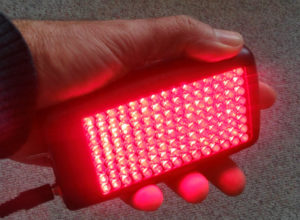
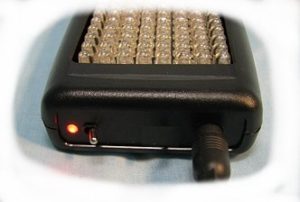
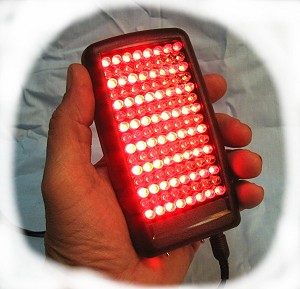


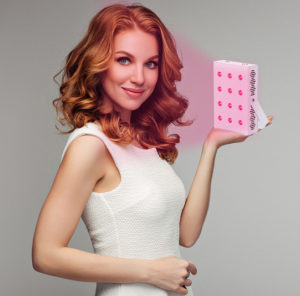
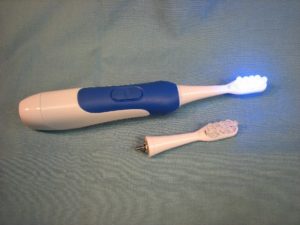
10 Comments to Healing with Single Frequency LED Light